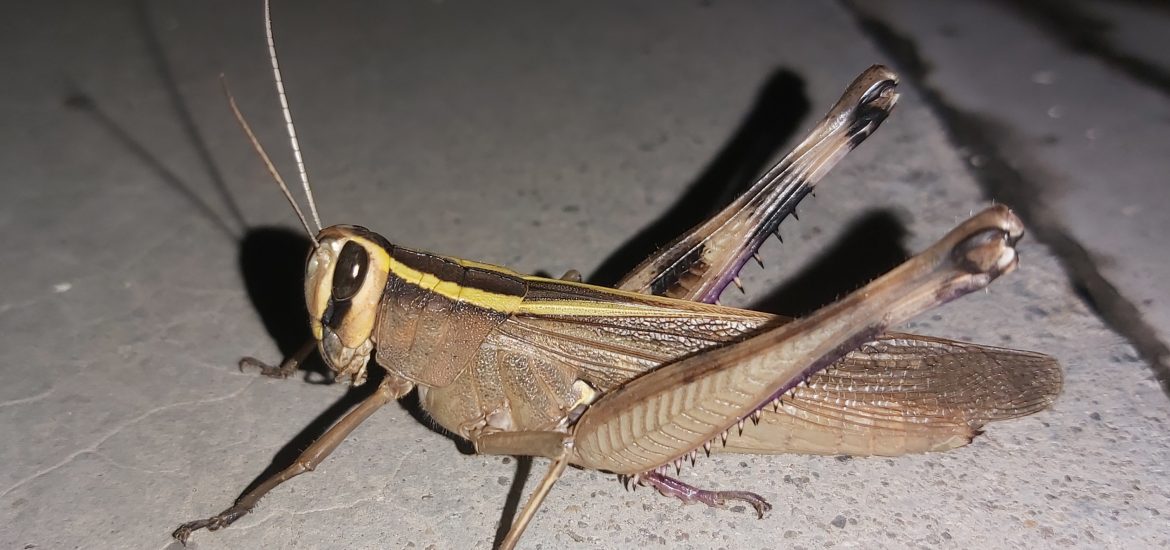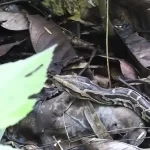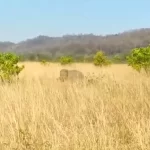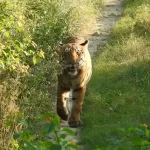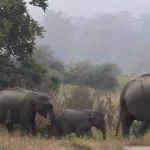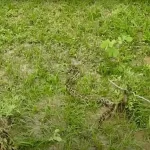Grasshoppers are among the earliest herbivorous insects to use chewing as a mean of food intake. They are usually found in low vegetation or on the ground and possess long powerful hind limbs that are used for locomotion and escape from predators by jumping. They possess a pair of large compound eyes on the side of their heads that give them a wide field of view. In addition, they possess three small eyes on the forehead that are used to gauge the intensity of light. A pair of antennae located on the head is capable of detecting smell and touch. The grasshoppers have a special pair of organs called tympanal organs, located at the front of their abdomen for sound reception. Interestingly, grasshoppers do not produce sound through their mouths but they use a row of pegs on the side of their legs to rub against a specially modified vein of their wings to create the loud sound that we hear when they are around.
Grasshoppers feed on leaves and vegetation and help create a healthy balance in the food chain by controlling population of plants and being prey to the creatures that feed on them. However, when they congregate in swarms, they can move for great distance and devastate vegetation from large areas. This is when they are termed as ‘locust’.
Grasshoppers have been around for last 250 million years on the planet. Today almost all species of insects including grasshoppers are threatened due to human actions including habitat alteration and destruction, intensive agriculture, shifting agriculture practices like Jhum cultivation of northeast India, genetically engineered crops, excessive use of chemicals including pesticides, urbanization, industrialization and climate change. In addition, they are used as a source of human food in many parts of the world.
Monsoon is a great time to look for insects. This beautiful grasshopper was recently photographed by our team of naturalists at Jim’s Jungle Retreat.
The grasshopper story!
